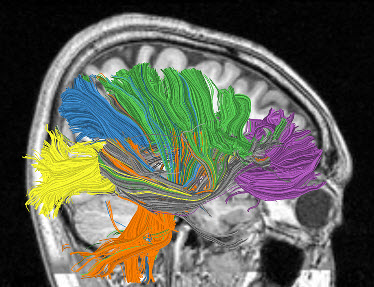 IBM said today that it has made significant progress toward developing a computer that simulates and emulates the brain’s abilities to sense, perceive, interact, and recognize.
IBM said today that it has made significant progress toward developing a computer that simulates and emulates the brain’s abilities to sense, perceive, interact, and recognize.
The computer does this by imitating the brain’s low-power energy consumption and compact size, and it has an intelligence level that approaches the smarts of a cat. Big Blue will announce the development at the SC 09 supercomputer conference in Portland, Ore.
IBM Research’s cognitive computing team has made progress with what it calls “large-scale cortical simulation” and has created a new algorithm, or math formula, that synthesizes brain-like data. Both of those steps are necessary in creating a brain-like chip. We wrote about this effort, headed by Dharmendra Modha, last year when IBM announced its start.
The scientists at IBM Research-Almaden and the Lawrence Berkeley National Lab have performed the first near-instantaneous simulation of the brain. The simulation is more sophisticated than that of a cat’s brain and has a billion “spiking neurons” and 10 trillion individual learning synapses, which are akin to the connections between brain cells.
And, working with researchers from Stanford University, IBM scientists have developed an algorithm that exploits the Blue Gene supercomputer to measure connections within the human brain without being invasive. The technique uses magnetic resonance diffusion weighted imaging to map the way the brain is wired. By doing this, IBM has taken a step toward unraveling how communications happen within the brain.
The advances will provide a way to study how the brain works and to move closer to the goal of building a chip that simulates that. If it can do so, and that is of course a big if, then IBM may depart from the way that computing has been done since John von Neumann figured out how to build computers back in the 194os.
The researchers believe that as the amount of digital data grows, and the world becomes more instrumented and interconnected, there will be a need to create faster, more efficient computing systems with a higher level of intelligence than those we use today. For all the sophistication of today’s supercomputers, they can’t do a lot of things, such as recognizing patterns, as well as humans do. Other researchers, such as Numenta founder Jeff Hawkins agree with that and are also trying to create brain-like computers.
“Learning from the brain is an attractive way to overcome power and density challenges faced in computing today,” said Josephine Cheng, IBM Fellow and lab director of IBM Research – Almaden, in a statement. “As the digital and physical worlds continue to merge and computing becomes more embedded in the fabric of our daily lives, it’s imperative that we create a more intelligent computing system that can help us make sense the vast amount of information that’s increasingly available to us, much the way our brains can quickly interpret and act on complex tasks.”
The IBM team built a cortical simulator that incorporates a number of innovations in computation, memory, and communication as well as sophisticated biological research. After completing the first part of the research, IBM and its university partners were given a $16.1 million grant from the Pentagon’s Defense Advanced Research Projects Agency to create a prototype chip that can simulate the brain’s functions. The idea is to create something that is as smart as a mammal.
The overall research team includes researchers from several of IBM’s worldwide research labs and scientists from Stanford University, University of Wisconsin-Madison, Cornell University, Columbia University Medical Center and University of California- Merced.

